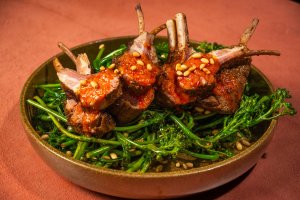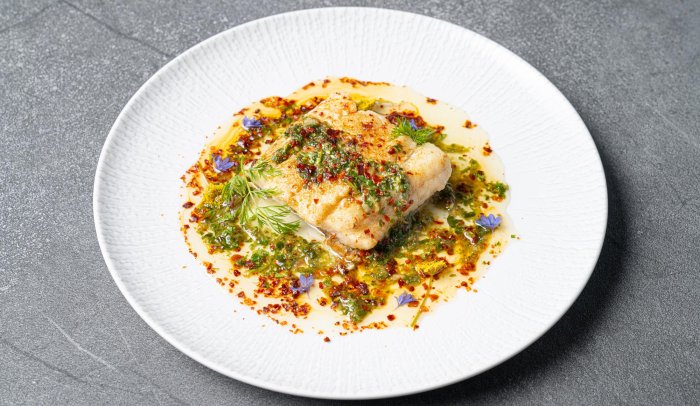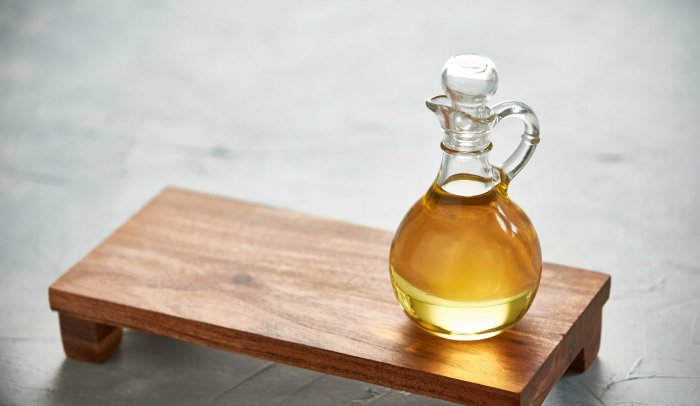- Articles
- August 13, 2025
How to Make Flavorful Ingredients Shine with Cottonseed Oil

Chef Mikel Anthony has a unique philosophy in the kitchen: Let ingredients speak for themselves.
That’s why when bringing new, elevated dishes to life with Chef’s Roll, he opts for neutral cottonseed oil over alternative oils. Whether it’s to prepare five-star quality proteins or showcase stand-alone flavors in sauces, he feels confident using cottonseed oil.
See how Chef Anthony makes entrees, sides and dressings simpler and tastier with one oil that can do it all.
Braised Octopus with Roasted Fingerling Potatoes and Garlic Salsa Verde
In Chef Mikel Anthony’s words, “A great octopus dish is all about mouthfeel.”
It’s clear from one glance at this elevated dish that he was able to achieve the desired mouthfeel and color by searing the octopus in cottonseed oil. Its smoke point of 450°F makes it an ideal choice for high heat cooking such as this, without burning or compromising on flavor.1
Coupled with the octopus are fingerling potatoes, which are tossed in cottonseed oil and spices, then roasted. To finish the dish, Chef Anthony blends up a salsa verde with fresh garlic and cottonseed oil to coat the octopus and potatoes. The neutral flavor of the oil is perfect for both elements as it allows all the ingredients to stand out.2 Chef’s looking for more sustainable ingredients should also consider cottonseed oil because it has a lower environmental impact than alternative vegetable oils.3
This seafood entree checks all the boxes — pretty presentation, strong flavors and pleasing textures.
Triple-Cooked French Fries with Herb and Roasted Garlic Mayo
It’s no secret that cottonseed oil is great for deep frying, but did you know that it can also be paired with other ingredients to fry? To fry these triple-cooked french fries, Chef Anthony utilizes the neutral flavor of cottonseed oil to stretch out the rich beef tallow for an added layer of savory goodness.2 The two work hand in hand to deliver a light, crispy, beautifully browned outside and tender inside.
No fry recipe is complete without a sauce. After trying this herb garlic mayo, you’ll never settle for store-bought ketchup again. First, Chef Mikel Anthony drizzles whole bulbs of garlic with cottonseed oil and roasts until soft. In the food processor, he adds garlic to other ingredients and blends together with cottonseed oil. It works well as a base for dressings, vinaigrettes, marinades and sauces (like this) that require a neutral flavor profile because of its flavor stability4 and saturated fat content. With a lower environmental impact than other vegetable oils, cottonseed oil is not only great for flavor and texture, but is also a more sustainable ingredient for chefs.3
Seriously, you won’t find a better fry and dip combo than this.
Seared Lamb Chops and Charred Broccolini with Lemon Harissa Vinaigrette
Used in each component of this dish, cottonseed oil’s versatility shines.4 Chef Anthony grills fresh broccolini at a high temperature, bringing a delicious, charred punch to the tender stems. The star of the show is the seared lamb chops, which are covered in a rub and then seared until brown. The high smoke point of cottonseed oil helps the lamb chops withstand high heat while maintaining their succulent flavor. 1,2
Topping off the broccolini and lamb chops is a mouth-watering vinaigrette. Starting with a base of neutral cottonseed oil allows the notes of citrus from the lemon and smoky flavor from the harissa come through in the dressing. To finish the dish, Chef Anthony tosses the broccolini in the vinaigrette and sprinkles on toasted pine nuts for additional texture.
Feeling Inspired?
With a wide range of versatile applications, it’s no wonder cottonseed oil is a go-to ingredient for so many chefs, cooks and restaurants. From appetizers to desserts, check out the recipes you can make ‘In the Kitchen.’
1 Typical Smoke, Flash & Fire Points Commercially Available Edible Fats And Oils.” Institute of Shortening and Edible Oils, Inc.
2 Iram Sharif, et al. (2019). “Strategies to enhance cottonseed oil contents and reshape fatty acid profile employing different breeding and genetic engineering approaches.” Journal of Integrative Agriculture. 18(10):2205-2218.
3 Valentina Prado, Jesse Daystar, Steven Pires, Michele Wallace, Lise Laurin “Comparative Life Cycle Assessment of Edible Vegetable Frying Oils.” Transactions of the ASABE 64, no. 6: 1717–33 (2021). pp. 1720. https://doi.org/10.13031/trans.14515.
4 O’Brien, R., and Wakelyn, P., (2005). “Cottonseed oil: An oil for trans-free options.” inform. 16(11): 677-679. https://www.cotton.org/tech/cottonseed/upload/05CottonseedOil.Revised.pdf.

